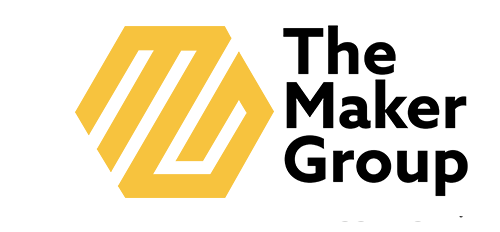As a sales and negotiation manager, you’ve likely witnessed every negotiation method under the sun. The collaborator, the manipulator, the accommodator — you’ve seen it all
Knowing if each negotiator is prepared for a negotiation is going to be both challenging and time-consuming unless you get everyone on the same page.
Exactly how do you manage a negotiating team with so many opposing negotiator types?
We want to help you by showing you our proven processes for managing your negotiation team through even the toughest negotiations.
The 4-Step Process for Managing Your Negotiation Team
Believe it or not, there is a proven method for managing your negotiation team that doesn’t require a complete upheaval of personalities and personnel. Follow our 4-step process below.
#1: Make Sure Everyone Is Operating From the Same Playbook
If you feel like your team is all over the place in terms of negotiation styles, techniques, and preparation, then you need to focus on getting everyone aligned with the same processes.
When everyone is operating from the same playbook, managers have time to focus on what matters the most — the bottom line. But when negotiation managers are caught up in the chasing of information from negotiators, things get messy, negotiations go sour, and relationships suffer.
The Maker Group offers negotiation training and consulting to help companies just like yours create a specific plan of action and execution for every negotiation.
Using our proprietary tool called Maker Connect, managers have a real-time visual of:
- Where every negotiator is in planning and preparation
- Variables assessments
- Key risks
- Current offers
- And more
Negotiations are already complex and require attention and involvement from management at almost every level. Simplifying the process by aligning your team with an effective and efficient strategy will not only save time, but it will also ensure that no money is being left on the table during a negotiation.
#2: Map Out Possible Conflicts
Facing any potential conflicts head-on will help to clarify the goals of the negotiation and establish a common purpose.
Take the time to plot out competing interests and how they may affect your priorities and potential profits.
Consider the main interests of the other parties involved. Are they concerned about a price increase? Are they more worried about supply issues? Whatever their concern, negotiators should be prepared in advance for every element of the negotiation.
Negotiation managers have the responsibility of providing negotiators with the tools to plot out potential conflicts and know which internal trade-offs are acceptable and which are non-negotiable.
#3: Assign Team Roles
Know the strengths of your team and assign their roles accordingly. Not every negotiator is a closer, some are better at knowing the subject matter.
The last thing you want at the negotiation table during a complex deal is an incohesive team. Competing parties will easily recognize and leverage any conflict or confusion within your team.
Assigning clear roles will alleviate any confusion before, during, and after negotiations. These roles don’t necessarily need to be correlated to job titles or duties but should be based on the skill sets and strengths of everyone involved.
The Authority
Usually, the role of the authority goes to the manager. They’re not in the negotiation room, rather they focus on aligning the team ahead of the negotiation and assessing the negotiation to provide recommendations if necessary.
Typically, the authority will ensure that everyone on the team is providing insight into the strategy and cultivating an environment of inclusion.
If a deal is not reached, the authority may step in, while staying behind the scenes, to develop a plan of action to keep negotiations moving forward.
The Facilitator
The facilitator is your primary negotiator and usually the one who’s good at asking questions and making offers. They’ll be the person in direct contact with the opposing parties, so they must demonstrate the ability to defuse negative emotions and provide solutions to conflicts.
In more complex negotiations that require a lot of back and forth, the facilitator is also the information gatherer. And when it comes time to make a deal, the facilitator resolves any outstanding issues and ultimately reaches an agreement with the other party.
The Note-Taker
The note-taker has a straightforward, yet critical, role in negotiations. They are responsible for maintaining a record of every conversation, and although these transcripts aren’t required to be lengthy, they must be accurate and concise.
Simply put, the note-taker must stay on top of everything that is being discussed, including the reactions from each side of the negotiation.
The SME
The SME (subject-matter expert) may not be present for every part of the negotiation, but they can be rolled in when needed to provide particular evidence or assessments of key elements.
The SME doesn’t usually do any direct negotiating, they simply provide answers to questions.
It’s the job of the authority and the facilitator to brief the SME ahead of entering the negotiation room to ensure their comments are aligned with the position of the company.
#4: Mediate Conflicts as Needed
In some cases, mediation may be required when a team cannot reconcile its differences.
Usually, a team member who is not directly linked with the negotiation at hand, or an outside facilitator can step into this role.
The mediator is there as a buffer between competitive team members and will listen to their goals, ask questions, and provide solutions to internal conflict.
The need for mediation should not be seen as a sign of weakness within your team, but rather as an opportunity to align every team member with the company’s best interests.
Implementing a Shared Strategy Is Easy Using The Maker Framework
A shared strategy is only as good as your ability to implement and execute it. With The Maker Framework, the entire negotiation planning process is streamlined and simplified, ensuring that everyone — from managers to negotiators to supporting team members — is on the same page internally.
Frontline negotiators gain much more confidence in their ability to lead a successful negotiation when they know that their boss and their boss’s boss are aligned with the strategy of the negotiation.
As a manager, let’s say you give your negotiator the task of getting a 10% price increase from a customer, but don’t provide any alternatives to that strategy. The negotiator is likely going to fail.
The customer will always counter in a negotiation.
During the planning process, it should be made very clear across all internal parties involved, what’s expected, where there’s room to wiggle, and at which point the negotiator is authorized to walk away.
For example, if the customer is refusing 10%, the negotiator may then counter with a 9% increase, provided they can get some value back by getting A and B from the customer. If the customer still refuses, the negotiator is preauthorized to drop the price increase to 8%, provided they can get A, B, and C from the customer in return. If the customer still refuses, the negotiator is pre-authorized to walk away from the deal.
Making it crystal clear to your negotiation team what they are authorized to offer not only gives your team the confidence they need to succeed, but it removes any question as to how the outcome will affect their position and reputation.
Clarity leads to confidence — and confidence leads to execution.
What Is The Maker Framework?
So, what exactly is The Maker Framework and how can it help you manage your negotiation team?
The Maker Framework is a proprietary process designed specifically for leadership and management to effectively manage the entire planning and execution process of every negotiation.
Using our tool, Maker Connect, managers can know within five minutes if their negotiation team is ready for the negotiation or if they require additional support.
The tool leverages The Maker Framework and alleviates any confusion as every person involved in the negotiation is using the same step-by-step process of preparation.
Operating from a unified position is critical to the success of any negotiation. Our tool allows managers to see the progress of that negotiation in real-time and provide support where needed.
Our 8-Step Framework for Success
The Maker Framework provides negotiation teams and managers with a fail-safe 8-step process for planning and executing a negotiation that includes:
- Objectives — mapping out what the main objectives are on each side of the negotiation.
- Power Assessment — determining the power dynamics of a negotiation and where you think your power sources come from.
- Variables Assessment — assessing everything included in the negotiation with an understanding as to what is important to each party involved.
- Communications — formulating questions, conveying critical messaging, and eliciting positive responses to your offer.
- Timeline — developing an estimated timeline for key events in the negotiation.
- Risk Assessment — analyzing and mitigating potential risks.
- Negotiate — constructing proposals, offers, and counter offers.
- Alignment — ensuring that all parties live up to their end of the agreement.
For managers, having access to negotiation planning insights within our tool, Maker Connect, ensures total alignment every step of the way. Managers can leave notes, arrange meetings, and provide support as needed.
Gain Access To Clear Insights With a Global Admin Dashboard
In addition to individual negotiation insights, managers now have access to a global admin dashboard that allows instant access to an overall snapshot of projects. This provides a clear visual of:
- New, open, and closed negotiations.
- Owners and collaborators.
- Total value created across all negotiations.
- Average power states across all negotiation plans.
- Top variables used in negotiations.
- Top organizational obstacles and enablers.
- Average global powers from a macro/micro standpoint.
- Average confidence levels for future negotiations.
- A heat map for the different types of negotiations your team is involved in.
Aligning your team has never been easier when you combine The Maker Framework with Maker Connect.
The Maker Group: Proven Strategies and Tools for Managing Your Negotiation Team
The Maker Group is composed of expert negotiators with decades of combined experience across all industries. We’ve spent years servicing some of the top companies in the world, and we can help you too.
We provide tailored-to-you training and consulting solutions to help you achieve your goals through our proven step-by-step planning process which is supported by our proprietary Maker Connect Platform.
Our top priority is delivering solutions to the real-world problems negotiators face every day. We’ll equip your entire team with the skills and knowledge needed to succeed in every negotiation.
Contact us today to schedule your free consultation.





Sorry, the comment form is closed at this time.